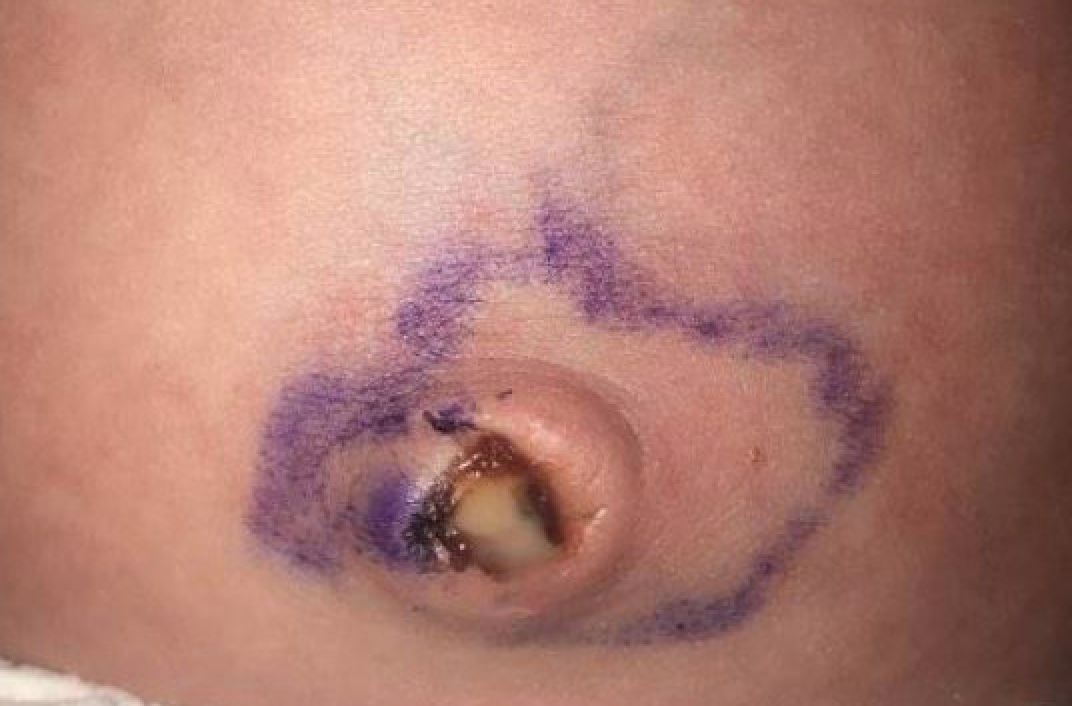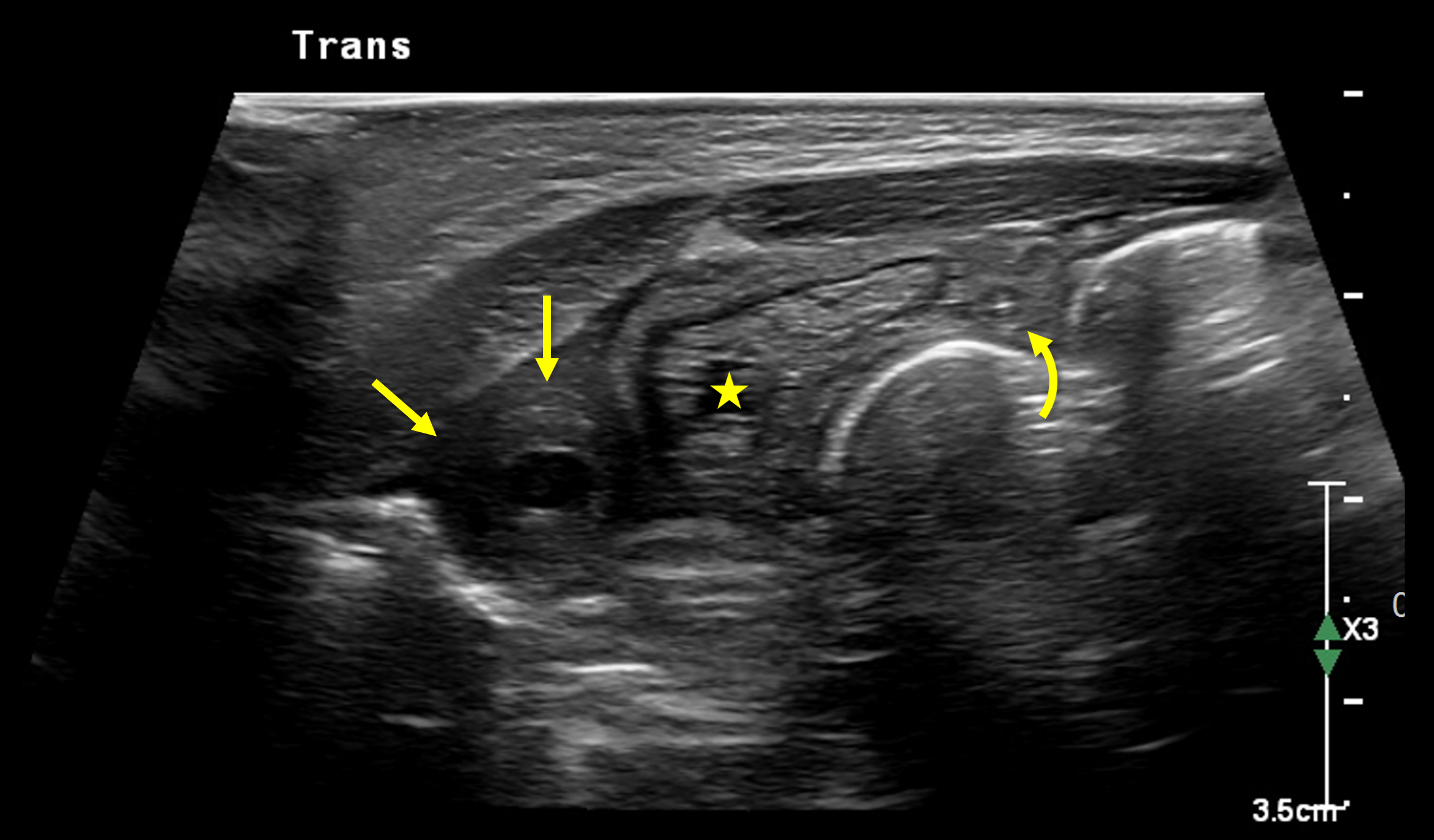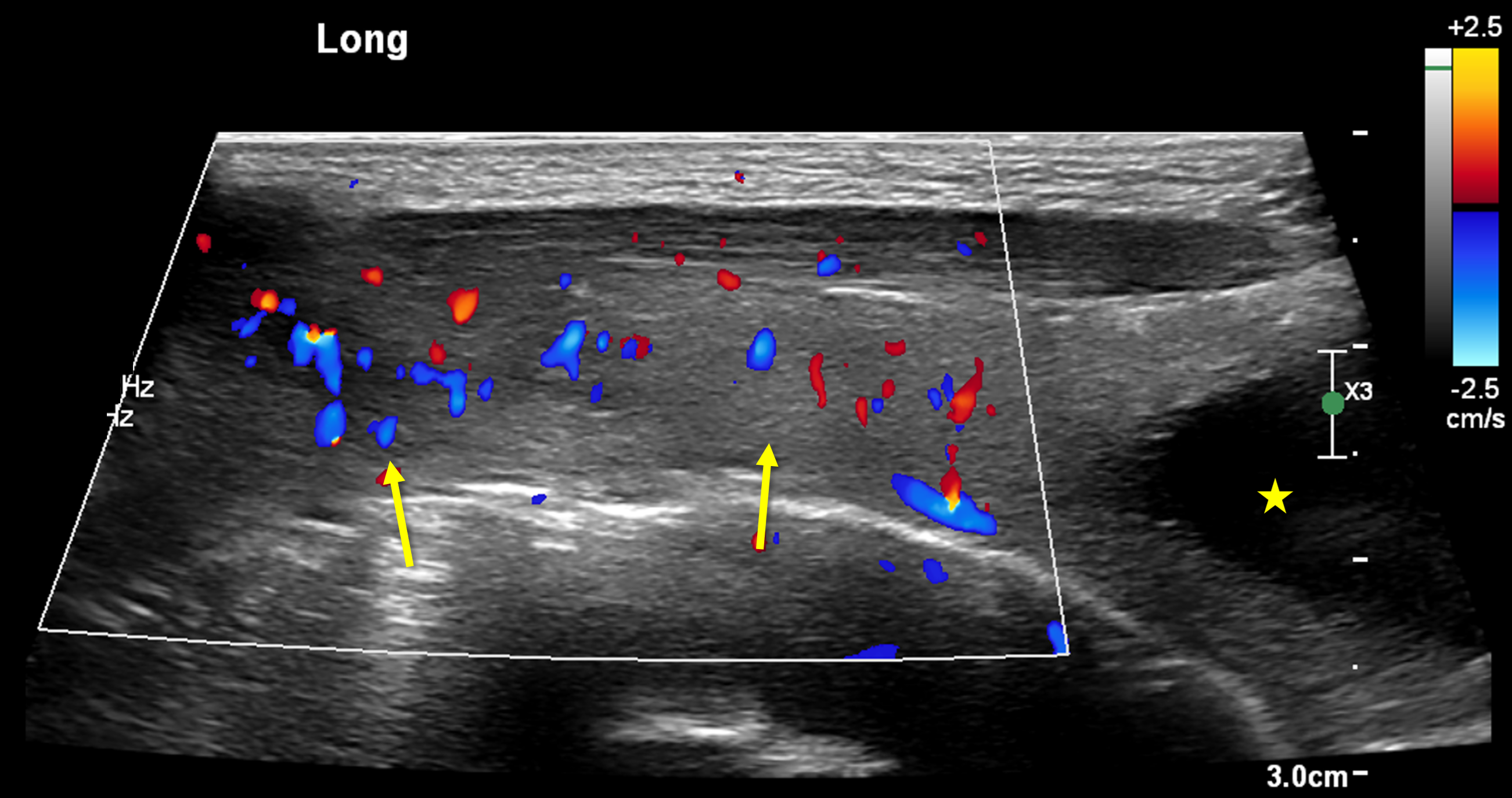Infectious Diseases 6: Infectious diseases syndromes
Session: Infectious Diseases 6: Infectious diseases syndromes
046 - A Curious Case of Purulent Umbilical Discharge In A Newborn
Sunday, April 27, 2025
8:30am - 10:45am HST
Publication Number: 46.3904
Natalie Chapkis, Seattle Children's Hospital and University of Washington, Seattle, WA, United States; Rachel LaFontaine, University of Washington School of Medicine, Seattle, WA, United States; Scott J. Weissman, Seattle Children's, Seattle, WA, United States; Jeffrey Otjen, Seattle Children's Hospital, SEATTLE, WA, United States; Sarah Zaman, University of Washington School of Medicine, Seattle, WA, United States

Natalie Chapkis, MD (she/her/hers)
Resident Physician
University of Washington School of Medicine
Seattle, Washington, United States
Presenting Author(s)
Background: Septic umbilical arteritis is a rare infection of umbilical arteries presenting with purulent or bloody drainage from the umbilicus in neonates. Staphylococcus aureus is typically the causative organism infecting arterial walls within 48 hours after birth, potentially leading to delayed vessel obliteration. Complications include peritonitis, septic/thrombotic emboli, arterial erosion/bleeding, and sepsis.
Objective: A 12-day old ex-39 week infant presented to an outside hospital with fever to 101.6 F and decreased energy. He was born via normal spontaneous vaginal delivery via water birth at a birthing center with his umbilical cord cut in the usual sterile fashion.
Design/Methods: Initial neonatal fever evaluation demonstrated methicillin-susceptible Staphylococcus aureus (MSSA) bacteremia, so he was initially treated with nafcillin, ceftazidime, and acyclovir. He was transferred to our institution for ultrasound-guided lumbar puncture, which is reassuring against meningitis. He is narrowed to cefazolin to treat MSSA bacteremia.
A few days into hospitalization, he develops continuous purulent drainage from the umbilicus. He remains well appearing, and there is minimal surrounding erythema and no apparent tenderness or swelling. We obtain an umbilical ultrasound.
Results: Both umbilical arteries are inflamed, hyperemic, and thrombosed, though the right artery is more severely affected. In combination with MSSA bacteremia, these ultrasound findings suggest septic umbilical arteritis with thrombosis.
He is treated with four weeks of cefazolin through a femoral PICC line. He clears his bacteremia, defervesces, and is discharged home after a prolonged hospitalization.
Conclusion(s): In infants with fever and umbilical discharge, omphalitis is always a concern. But if erythema and induration are not present, urachal anomalies should also be assessed for by urinalysis and ultrasound. Septic umbilical arteritis is rare, but can be another infected underlying anatomic structure to assess for sonographically. There are few case reports in the literature to guide medical and/or surgical treatment of septic umbilical arteritis. In consultation with infectious disease colleagues, we chose a 4-week course of parental antibiotics modeled after septic endovascular thrombosis treatment, but there may be other reasonable treatment approaches.
In neonates with purulent umbilical discharge, septic umbilical arteritis should be on the differential, because it has unique complications and treatment implications.
Figure 1:
 Purulent discharge through the umbilicus with slight surrounding erythema demarcated by marker develops a few days into hospitalization.
Purulent discharge through the umbilicus with slight surrounding erythema demarcated by marker develops a few days into hospitalization.Figure 2:
 Axial ultrasound image through the midline lower abdomen at the level of the superior bladder shows asymmetry of the obliterating umbilical arteries. The right artery (straight arrows) is hypoechoic, thickened, and enlarged compared to the left (curved arrow). These paired structures course laterally to the bladder dome (star).
Axial ultrasound image through the midline lower abdomen at the level of the superior bladder shows asymmetry of the obliterating umbilical arteries. The right artery (straight arrows) is hypoechoic, thickened, and enlarged compared to the left (curved arrow). These paired structures course laterally to the bladder dome (star).Figure 3:
 Longitudinal Doppler ultrasound image of the right para-midline abdomen, focused on the right umbilical artery (arrows). There is increased Doppler signal (red and blue color) on the right compared to the left (not shown), consistent with abnormal inflammation of the thrombosed obliterating umbilical artery.
Longitudinal Doppler ultrasound image of the right para-midline abdomen, focused on the right umbilical artery (arrows). There is increased Doppler signal (red and blue color) on the right compared to the left (not shown), consistent with abnormal inflammation of the thrombosed obliterating umbilical artery.
